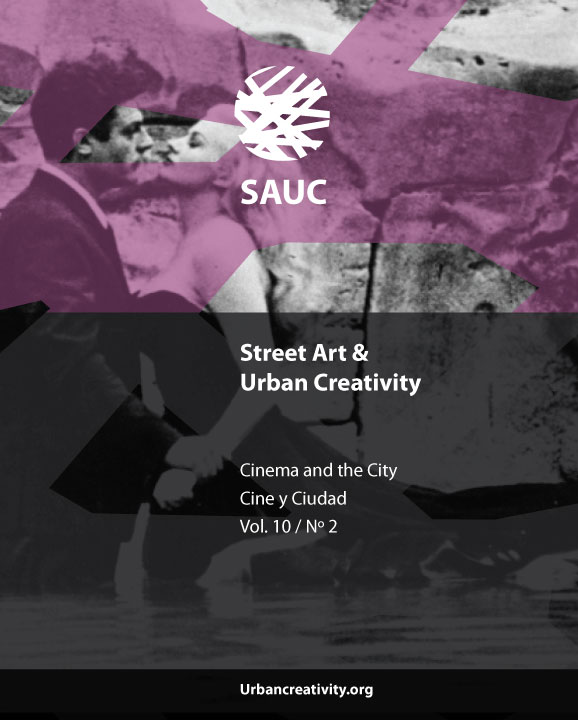From Streets to Screens
the Entangled Histories of the Medium of Film and Parisian Streets
DOI:
https://doi.org/10.25765/sauc.v10i2.968Palabras clave:
Street, city symphony film, French avant-garde film, lived experience, urban artResumen
What is the relationship between city and film? This relationship is crucial to the 1920s and 1930s city symphonies. Recent scholarship confirms that these films form a distinct genre due to their relation with the city. This article argues that to better understand the relation between city and film, including in the city symphony genre, we need to explore in more detail those specific aspects of the city that become entangled with film. I ask: in which ways is the medium of film entangled with the lived experience of the city, more specifically to the history of the material reality of city streets? Paris’ transformation by Haussmann in the mid-19th century serves as the defining moment that changed the lived experience of Parisian city dwellers. Walter Benjamin notices how this change to urbanity impacted art as manifested in Charles Baudelaire's poetry. Expanding on this idea, I turn my attention to film and explore the ways in which it responded to the changed streets of Paris through its medium. Alberto Cavalcanti’s Rien Que les Heures (1926), a Paris city symphony, is key. Jean-Luc Godard’s À Bout de Souffle (1960) is a later point in the history of film's entanglement with Parisian streets. By looking more closely at how the cinematic medium integrates into its mechanism the space-time of city streets, this article offers further insights on the relationship between art and street, here more specifically between film in relation to the fate of the streets in Paris. We do not need to watch films about the city to experience it, in many ways the medium of film itself integrated and paralleled the experience of the city and its modern urban streets. Based on this, if the city symphony is indeed a film genre based on its distinctive relationship to the city, it compels ‘genre’ to engage medium among its formal parameters.
Descargas
Estadísticas globales ℹ️
|
181
Visualizaciones
|
103
Descargas
|
|
284
Total
|
|
Descargas
Publicado
Cómo citar
Número
Sección
Licencia
Los autores/as que publiquen en esta revista aceptan las siguientes condiciones:
- Los autores/as conservan los derechos de autor.
- Los autores/as ceden a la revista el derecho de la primera publicación. La revista también posee los derechos de edición.
- Todos los contenidos publicados se regulan mediante una Licencia Atribución/Reconocimiento-SinDerivados 4.0 Internacional. Acceda a la versión informativa y texto legal de la licencia. En virtud de ello, se permite a terceros utilizar lo publicado siempre que mencionen la autoría del trabajo y a la primera publicación en esta revista. Si transforma el material, no podrá distribuir el trabajo modificado.
- Los autores/as pueden realizar otros acuerdos contractuales independientes y adicionales para la distribución no exclusiva de la versión del artículo publicado en esta revista (p. ej., incluirlo en un repositorio institucional o publicarlo en un libro) siempre que indiquen claramente que el trabajo se publicó por primera vez en esta revista.
- Se permite y recomienda a los autores/as a publicar su trabajo en Internet (por ejemplo en páginas institucionales o personales), una vez publicado en la revista y citando a la misma ya que puede conducir a intercambios productivos y a una mayor y más rápida difusión del trabajo publicado (vea The Effect of Open Access).













